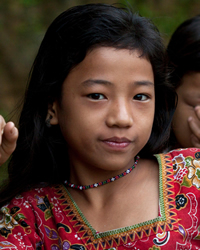Khawngtu in Myanmar (Burma)

Photo Source:
Asia Harvest-Operation Myanmar
|
Send Joshua Project a map of this people group.
|
| People Name: | Khawngtu |
| Country: | Myanmar (Burma) |
| 10/40 Window: | Yes |
| Population: | 5,000 |
| World Population: | 5,000 |
| Primary Language: | Language unknown |
| Primary Religion: | Christianity |
| Christian Adherents: | 96.00 % |
| Evangelicals: | 48.00 % |
| Scripture: | Unspecified |
| Ministry Resources: | No |
| Jesus Film: | No |
| Audio Recordings: | No |
| People Cluster: | South Asia Tribal - Naga |
| Affinity Bloc: | South Asian Peoples |
| Progress Level: |
|
Identity
The Khawngtu are a new Chin language group with their own ethnic identity, who until now have never appeared on any secular or Christian lists of the world's people groups. For generations the Khawngtu have viewed themselves as a distinct people, but governments and academics have lumped them together with other Chin-related tribes for administrative purposes, not wanting to individually acknowledge the myriad of small tribes that inhabit the Chin Hills.
Location: With a population of approximately 5,000 people, the Khawngtu tribe inhabits ten villages in western Myanmar's Chin State. All their villages (which from north to south are: Tein Kin Kone, Kin Kan Kone, Laung Yaw Kone, Baung Kone, Pa Ton Kone, Shwe Pyi Kone, Ah Ngin Kone, Pein Kone, War Laung Kone, and War Daing Kone), are situated west of the town of Matupi in the district of the same name. The Khawngtu dwell in a small area encircled by seven other Chin tribes: the Mara and Asang Khongso to the north; Likhy and Khongso to the west; Lemi to the south; and the Rengca and Matu to east. A visitor described the terrain in 1907: “The hills are very steep and are separated by steep valleys. You see a village on an opposite hill, which seems to be a few hundred yards off, and have to travel up and down steep hills sometimes eight or ten miles to get to it.”
Language: In the past, Khawngtu was merely listed as one of over a dozen different Eastern Khumi dialects, but subsequent research has found that many of those “dialects” are actually distinct languages, including Khongtu.2 Many Chin tribes possess a legend that their lack of literacy was due to an act of deceit by the Burmese, who tricked the naïve Chin and caused them to lose their script.
History
Although some scholars have suggested the first Chin arrived in western Myanmar around AD 750, most agree that later waves of migrants established the Chin presence in the 1300s. For centuries the Chin tribes have been engaged in warfare and struggle, both with invading forces and with each other. It was said: “A slave in the Chin Hills in the late 19th century was worth four head of cattle, a good gun, or twelve pigs. Slaves were current coin in the hills and passed from hand to hand as easily as a banknote in more civilized regions.”
Customs
Matupi is a mountainous area covered with subtropical forests. The highest mountain in the area is Awtaraw at 9,009 feet (2,746 meters) tall. Wildlife in Matupi includes pangolin, tigers, leopards, bears, and many species of monkeys, while hornbill birds are found in plentiful numbers. Most Khawngtu families are engaged in agriculture, and common crops include corn, coffee, oranges, plums, and potatoes.
Religion
For countless generations the Khawngtu venerated spirits, and great care was exercised not to offend demons that could bring disaster on the community. Key mountains, rivers, and even trees were worshipped as deities. In the 20th century, Christianity swept through Chin State, bringing tens of thousands of people into the kingdom of God, including among the Khawngtu. Today, only a few hundred Khawngtu living in remote villages hold on to the beliefs of their forefathers, although alarmingly, animistic rituals have carried over into some Khongtu churches.
Christianity
Although almost all Khawngtu families today profess faith in Jesus Christ, no Scripture or other resources have ever been produced in their language. Believers have had to rely on Bibles in other languages that are not their own, which may have stunted the spiritual growth of the Khawngtu believers.